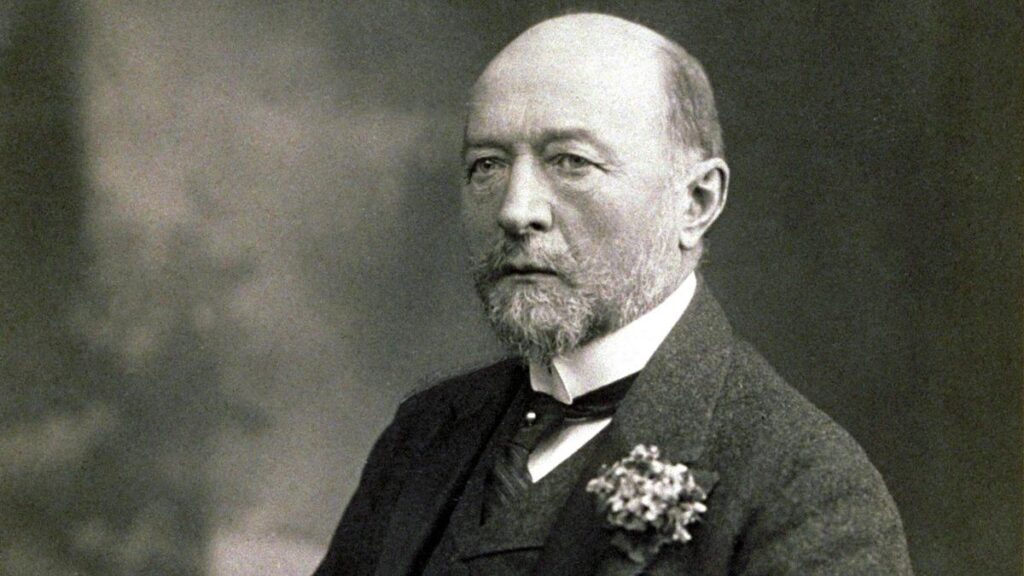
Behring’s work transformed how bacterial infections are treated and alsoinspired generations of scientists to explore the human immune system.
| Photo Credit: Wikimedia, Creativecommons
According to the World Health Organization (WHO), serum therapy laid the foundation for passive immunisation and greatly influenced the development of vaccines and other biotherapeutics. The work of Emil Adolf von Behring more than a century ago, continues to have a lasting impact on modern medicine.
Overview of the first Nobel Prize in Physiology or Medicine
Emil Adolf von Behring, a German physiologist born on March 15, 1854, holds the historic title of being the very first person to win the Nobel Prize in Physiology or Medicine. He received this honour in 1901, during the inaugural year of the Nobel Prizes, marking a pivotal moment in the history of medical science.
Behring was born in Hansdorf, a small village in Prussia (now part of Poland), to a schoolmaster father and was one of thirteen children. Despite financial difficulties, he managed to pursue medical studies through a military medical programme, which obligated him to serve in the army after graduation. This path laid the foundation for his meticulous and disciplined approach to scientific research.
He eventually worked at the Institute for Infectious Diseases in Berlin, where he crossed paths with the famous bacteriologist Robert Koch. Under Koch’s mentorship, Behring honed his skills in bacteriology, immunology, and public health – areas that would define his career and change the future of medicine

What was his groundbreaking contribution?
Behring’s revolutionary contribution to medicine was his discovery of serum therapy as a treatment for diphtheria, a highly infectious and often fatal disease that particularly affected children. In the late 19th century, diphtheria was known as the “strangling angel of children” due to the thick membrane it formed in the throat, leading to suffocation and death.
The science behind serum therapy was based on the principle of passive immunity. Behring and his collaborator, Japanese physician Shibasaburo Kitasato, conducted experiments in which they injected animals — primarily guinea pigs and horses — with weakened strains of the diphtheria bacteria or its toxin. The animals developed specific defensive substances in their blood, which Behring called antitoxins. These antitoxins could then be extracted and injected into other animals– and eventually, humans, who had not developed an immune response of their own.
What made this work revolutionary was the fact that it introduced a way to treat infections, not just prevent them. While vaccines like those developed by Edward Jenner (for smallpox) worked by training the body’s immune system in advance, Behring’s serum could help those already infected. For the first time, it was possible to save lives in real time during an outbreak.
This marked the beginning of immunotherapy and the use of antibodies as medical treatment, laying the foundation for many modern advances including monoclonal antibodies and immune-based therapies used in cancer treatment today.

The Nobel prize comes calling
In 1901, Emil von Behring was awarded the first Nobel Prize in Physiology or Medicine for what the Nobel Committee described as “his work on serum therapy, especially its application against diphtheria.” His discovery came at a time when diphtheria outbreaks were claiming thousands of young lives across Europe and America.
What made the award particularly significant was not only the scientific merit of his discovery but its immediate real-world impact. Hospitals that began using his serum therapy saw dramatic drops in mortality rates. In some cases, the death rate among children with diphtheria plummeted from 50% to less than 10%. For the public, it seemed like a miracle. For the scientific world, it was a triumph of laboratory science applied to human suffering.
Behring became an international hero. The press called him the “Saviour of Children” and he was celebrated by governments and medical institutions across Europe. He was later ennobled by the German Emperor Wilhelm II and received the title “von,” becoming Emil von Behring.

What is his legacy today?
Beyond his Nobel-winning work, Behring also worked on developing a serum for tetanus, another deadly disease that used to be common among soldiers during wartime. Though less publicised than his diphtheria breakthrough, this work was equally important, especially during World War I.
An interesting and lesser-known fact about Behring is that he helped establish one of the first biopharmaceutical companies in Germany. His company, Behringwerke, became a major producer of vaccines and serum therapies and was later integrated into Bayer, the global pharmaceutical giant. His home in Marburg, Germany, has since been converted into a museum celebrating his scientific legacy.
Emil von Behring passed away on March 31, 1917, but the methods he pioneered remain essential in modern medicine. The concept of using antibodies to treat disease, which he introduced over a century ago, is now being used to fight cancer, autoimmune diseases, and even COVID-19.
Published – May 18, 2025 12:17 pm IST

